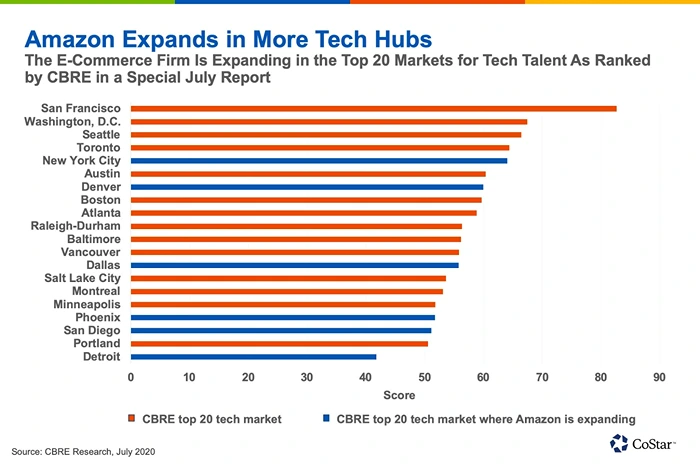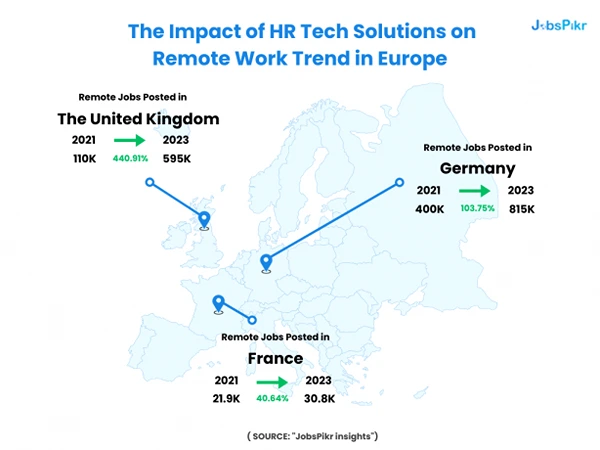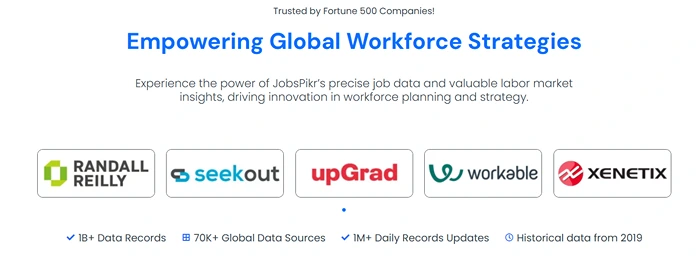- Business Expansion Strategies to Consider
- 1. Talent Isn’t Everywhere (Despite What the Internet Says)
- 2. The Real Cost of “Cheap” Locations
- 3. Infrastructure Can Make or Break You
- 4. Regulations: Small Print, Big Consequences
- 5. Culture Fit Goes Beyond Time Zones
- Case Studies: Business Location Strategy Lessons from the Field
- Remote Work: Use With Care
- The Optimal Business Expansion Strategies Framework
We’ve all heard the headlines: “Remote work is the future!” “Geography doesn’t matter anymore!” But here’s the reality—location still matters, and in ways that most companies only realize after painful lessons. That’s why the right business expansion strategies are so important.
Take a SaaS client we worked with last year. They embraced a fully remote, “location-agnostic” hiring strategy. The result? Time zone chaos, regulatory headaches across six jurisdictions, and a fragmented team culture. Their productivity stalled, and so did their growth.
The takeaway: Choosing where to anchor your hiring isn’t just about rent or tax rates. It’s about aligning talent access, operational efficiency, and long-term resilience. Here’s how to approach it strategically.

Image Source: Costar
Business Expansion Strategies to Consider
Opening new locations and expanding to different demographics requires careful consideration of several factors. Talent is an obvious one, but there are also infrastructure, cultural fit, and other factors to be considered.
1. Talent Isn’t Everywhere (Despite What the Internet Says)
Yes, remote work expands your options—but not infinitely. Some skill sets still cluster regionally, and chasing low costs can backfire if you can’t recruit effectively. While you should be looking at a global hiring pool if you can as a business, you still have to evaluate if that decision works for your entity.
What works
- Follow the industry ecosystem. Austin isn’t just a tech city—it’s now a hub for EV talent, thanks to Tesla’s Gigafactory and its ripple effects on suppliers and the workforce.
- Invest in workforce development. Chattanooga retooled its local college programs with help from utility provider EPB to create a pipeline of fiber optics talent. The result? Sustainable local hiring.
- Anticipate demographic shifts. Some German manufacturers are expanding in Mexico, not just for costs, but because Germany is facing a skilled labor shortage.
All of the above examples show how some trailblazing companies changed the way hiring is looked at and have hired smartly for their needs.
Tip: Tap into online communities. If Raleigh tech workers are complaining about recruiter spam, that likely means there’s active hiring and a viable talent pool.
2. The Real Cost of “Cheap” Locations
Lower salaries in a city like Tulsa may look great on paper—until you factor in hidden costs like long-haul travel, legal complexity, or retention challenges when relocating talent.
Better math
- The 3x Rule: If you save $10K/month on office space but spend 3x that on logistics, travel, or churn, it’s not a savings.
- Leverage favorable tax environments. South Dakota, for example, offers zero corporate income tax—a fact not widely advertised, but utilized by over 400,000 companies.
- Consider compliance costs. One fintech client avoided millions in GDPR exposure by operating from Switzerland despite Zurich’s higher costs.
- Think beyond unit costs. A manufacturing firm moved production to Vietnam for $20/unit savings but lost $2M during shipping delays. They now keep emergency stock closer to home, in Texas.

Choosing your home base or office locations comes with certain strategies. JobsPikr’s data can help with analyzing different states’ hiring atmosphere and give you a better understanding if it makes financial sense to open offices in these places.
3. Infrastructure Can Make or Break You
Infrastructure is more than internet speed—it’s power reliability, transport access, and operational uptime. While undeveloped countries with poor infrastructure may seem cost-effective, longer-term issues can prove to be major problems in the long run.
Some go-to checks
- Connectivity test: Look at wi-fi providers in the area/country to see if there are viable options that can withstand a company’s network requirements. Consider GDPR regulations as well.
- Shipping logistics: Border bottlenecks in El Paso regularly add hours to cross-border freight. That’s why many companies now prefer Eagle Pass.
- Utility stability: Alabama’s electricity is cheap, but if your site is in a tornado-prone area, downtime costs can negate the savings.
Location is critical if your business doesn’t just provide online cloud services. If ill-considered, supply chain disruptions or warehousing issues can cause longer downtime and interruptions.
Case in point: Toyota chose Greensboro, NC, not for subsidies, but because 94% of their suppliers were within a day’s drive. Efficiency won the bid.
4. Regulations: Small Print, Big Consequences
One Denver-based startup nearly went under by miscalculating Colorado’s paid leave mandates. Regulatory surprises like this are common and costly. Each country/state may have special labor laws and mandates that businesses need to adhere to, which require careful inspection beforehand.
How to stay ahead
- Watch state labor laws. California’s $20/hour fast-food wage might work for some, but not for franchisees with thin margins.
- Understand data laws. Hosting customer data in Montreal? Quebec’s Law 25 is stricter than GDPR in some areas.
- Track political shifts. Miami’s current crypto-friendly stance may not last beyond the next election cycle. Plan with contingencies.
Each city, state, or country has to be considered carefully and with due diligence before any commitment to operations is made.
Best practice: Build a relationship with a local employment attorney early. Their insights can prevent legal exposure before it happens.
5. Culture Fit Goes Beyond Time Zones

Image Source: Buffer
Culture clashes can quietly derail new offices. A hedge fund opened a Utah branch, attracted by the state’s reputation for work ethic, but struggled to integrate with local norms. The result? The office closed within a year.
What to research
- Work-life expectations: In Utah, family obligations come first. A culture of late-night emails won’t resonate. This can be the deal in many countries and demographics. Understanding that is important before any expectations.
- Communication styles: Direct feedback may feel abrasive in some regions. A lot of how people communicate is dependent on culture and their environment. The same approach may not work everywhere.
- Lifestyle alignment: If your company culture includes social drinking or late dinners, think twice before launching in communities with conservative values. The Middle East, for example, has different mingling sensitivities that need to be understood.
Checklist:
- Observe daily life rhythms (lunch breaks, business hours)
- Learn hierarchical norms (titles, formality)
- Evaluate diversity metrics, especially if inclusion is a priority
- Visit during peak weather extremes. If the team hates -40°C winters, Edmonton may not be viable long-term
Case Studies: Business Location Strategy Lessons from the Field
The Good: Wise (Estonia)
Wise tapped into Estonia’s top engineers early, took advantage of tax incentives, and used the country’s e-residency program to scale globally.
The Bad: Quibi (Los Angeles)
Built a lavish $91M HQ for a mobile-first platform—then folded within a year. The product missed the mark, and the office became a sunk cost.
The Ugly: FTX (Bahamas)
A textbook example of poor oversight, lax regulation, and misplaced hubris.
Remote Work: Use With Care
Remote-first isn’t a one-size-fits-all solution. It’s powerful when done right and created with proper values. Business expansion strategies must follow proven models and require complete consideration before a shift is made.
Proven models:
- The 2-Hub Approach: Lisbon + Medellín gives broad talent access with just a 6-hour time difference, enabling near-round-the-clock operations.
- Tax optimization: Puerto Rico’s Act 60 allows remote founders to retain 100% of capital gains, one reason it’s become a haven for digital entrepreneurs.
- Smart real estate: Vimeo ditched the massive HQ model and saved $40M/year using flexible co-working passes tied to anchor spaces in key cities.

Caution: Full remote work setups are generally best for younger, highly independent teams. As companies grow, most benefit from physical anchors to support collaboration and culture.
The Optimal Business Expansion Strategies Framework
The best advice that can be given to brands considering or developing business expansion strategies is to –
- Clarify your “why.” If the only reason is that leadership wants better golf courses, it’s not a strategy. Understanding the reasons for expansion or moving to new locations requires proper business necessities.
- Trust boots on the ground. Don’t rely solely on spreadsheets or surveys. Some of the best insights come from informal chats with locals. Send a few senior employees to scout the new locations and truly see what data may be missing.
- Think in phases. Vietnam may be optimal today, but what’s your backup plan when costs rise? Forward-thinking companies are already scouting future locations like Ethiopia. For example, companies that saw Nigeria as a booming economy felt the burn of the steadily devalued currency. Even if you’re making more money, you’re not.

Use tools like JobsPikr to provide accurate hiring, talent, and geographic information that is needed for your business to hire overseas or aid expansion strategies.
If you’re curious to see the platform in action, sign up for a free trial.




